
Photos of Kuban Cossacks
It can be hard to tell infantry and cavalry apart if the shoulderboards are not clear, although generally plastoons did not carry long sabres.
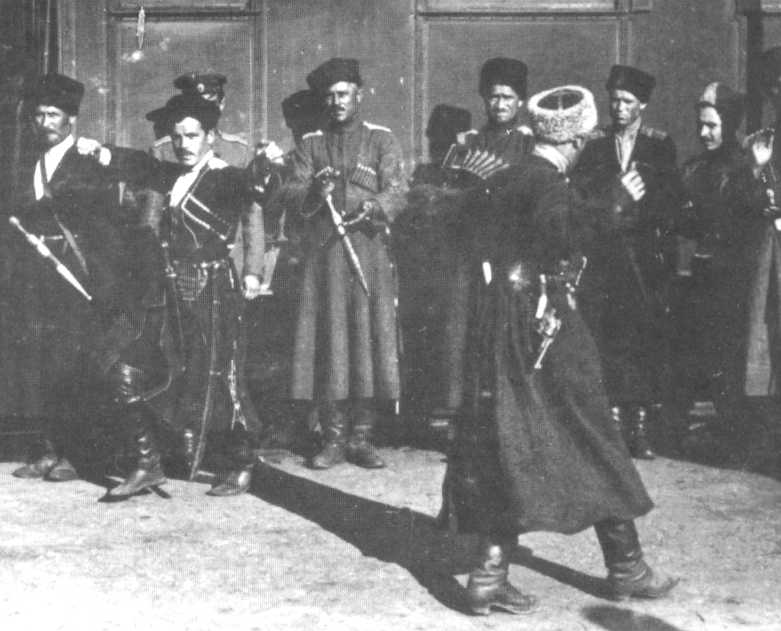
White Cossacks, presumably Kuban, dancing outside a train. Note the revolver on the closest man. The further dancer is an unusually elaborate uniform, perhaps even a guards one.
Plastoons
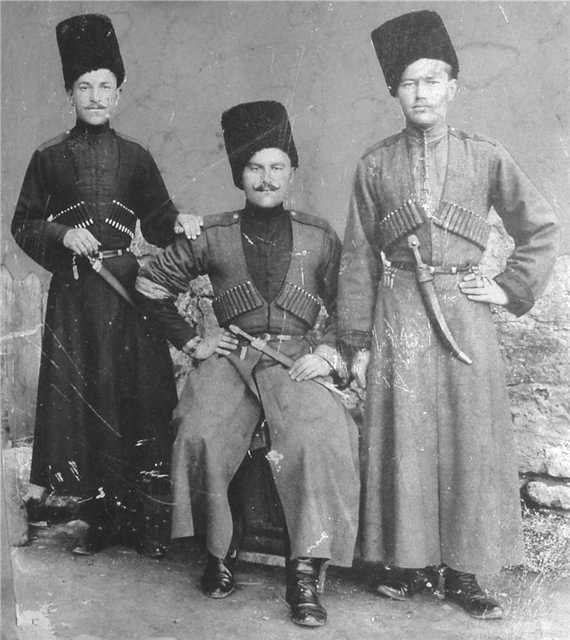
Men of the 5th Kuban Plastoon Battalion. A faint 5 can be seen on the centre man's right shoulder.

A sergeant-major of the 5th Kuban Plastoon Battalion.

This picture has been shrunk to fit the page – if you save it you will see the full variety of shoulderboards of Kuban plastoons. They include sewn in shoulderboards in khaki; separate ones with a stencilled monogram; the full official version for the 6th Kuban Plastoons with Tsar Nicholas's monogram in metal; and (for the child at the front) the vivid yellow on red of dress boards. The trousers mix khaki and dark, and the coloured stripe can be seen on a couple of the dark ones. Also visible is the different blouse styles and, of course, one man in traditional dress.
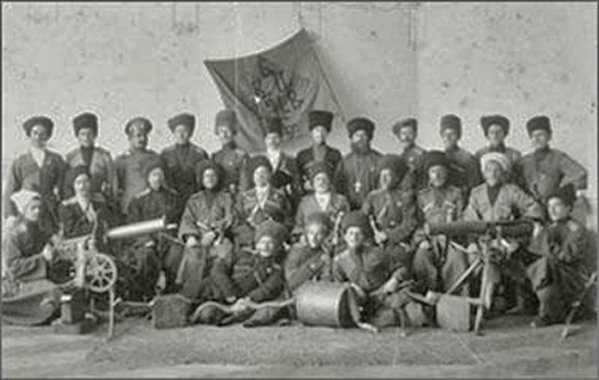
The 6th Kuban Plastoon Battalion in WWI in traditional dress. Of note is the flag. And the priest.
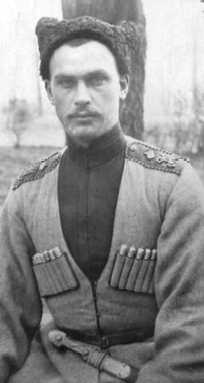
A man of the 6th Kuban Plastoon Battalion. His monogram in metal and WWI-era volunteer lace can be clearly seen.
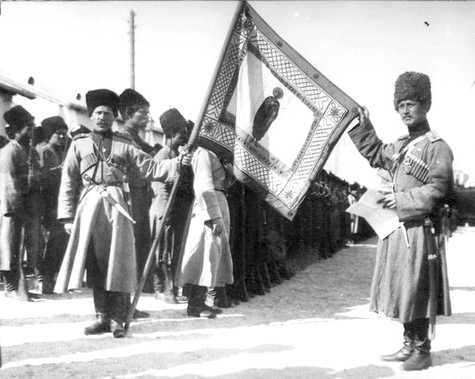
The 6th Kuban Plastoon Battalion on their way to the front in WWI.
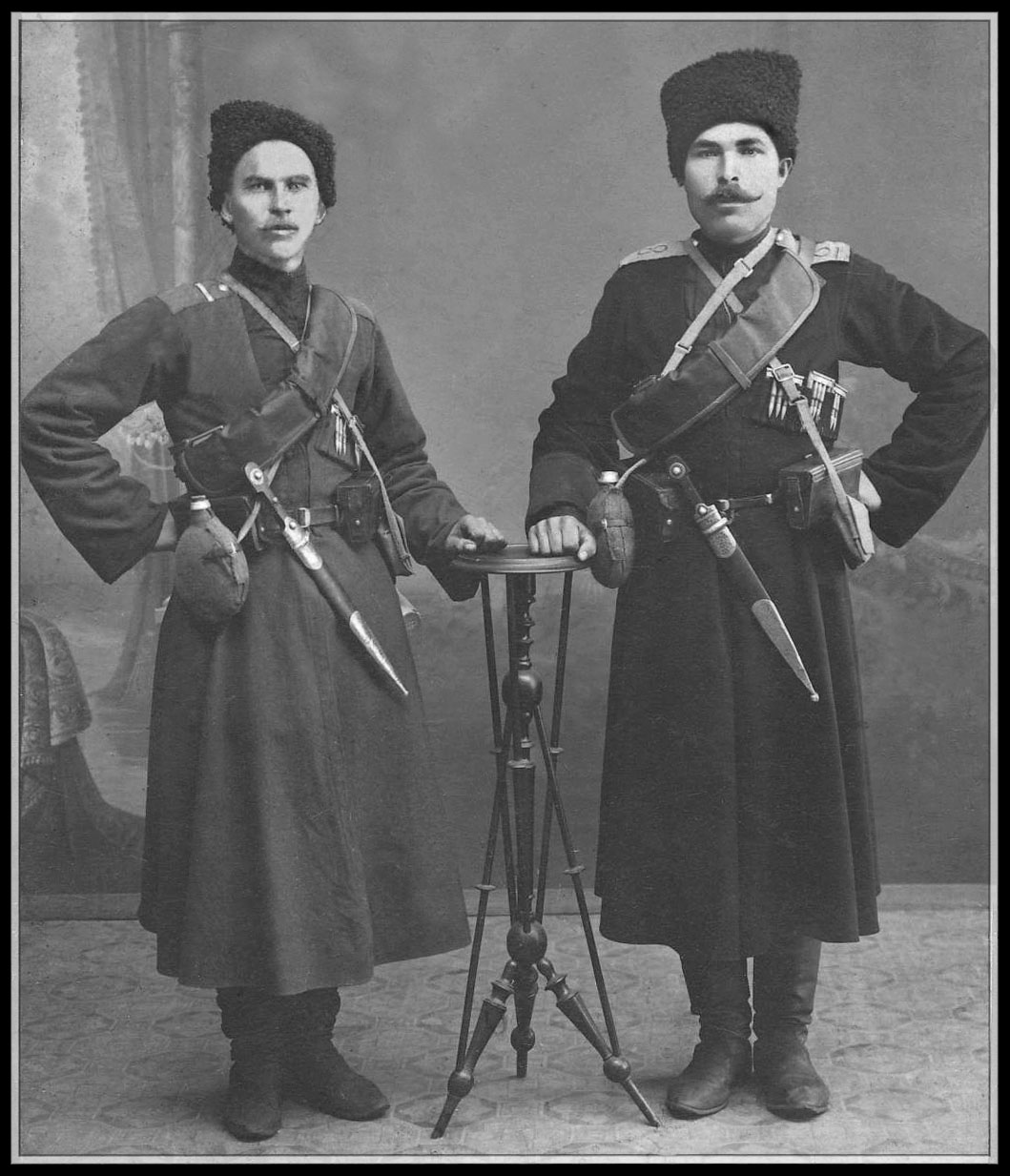
Kuban Plastoons with field equipment (shrunk). The man on the right has a very clear 8 on his khaki shoulderboards. The carrying of cartridge clips like this, half in-half out, was a popular affectation.
Cavalry
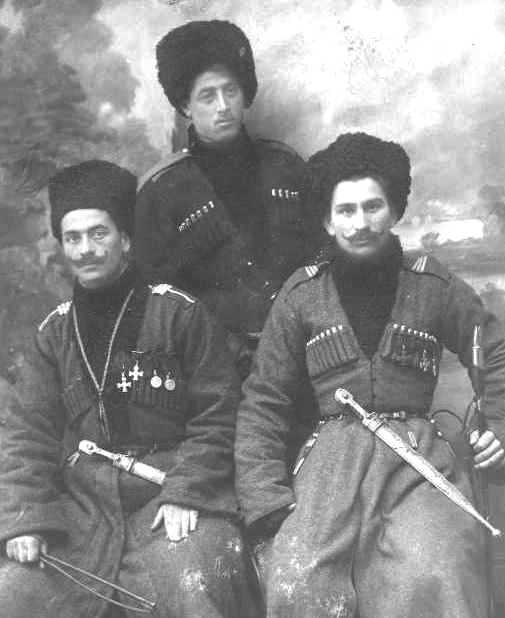
Kuban NCOs. Note the nagaika whip to the left, and the bashlyk of the man at the back. The curved moustache style seems to have been very popular in the Kuban at this time.
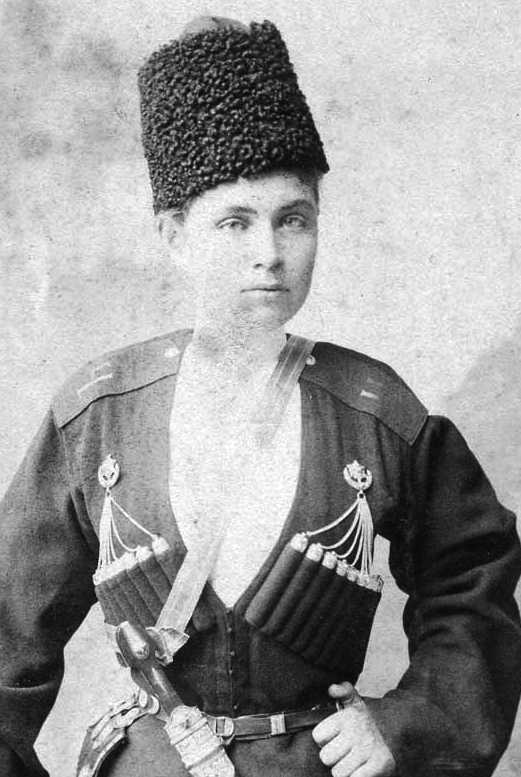
The monogram for the Black Sea Regiment, prior to WWI, can be clearly seen. The high conical hat was not much worn in the Kuban by 1914.
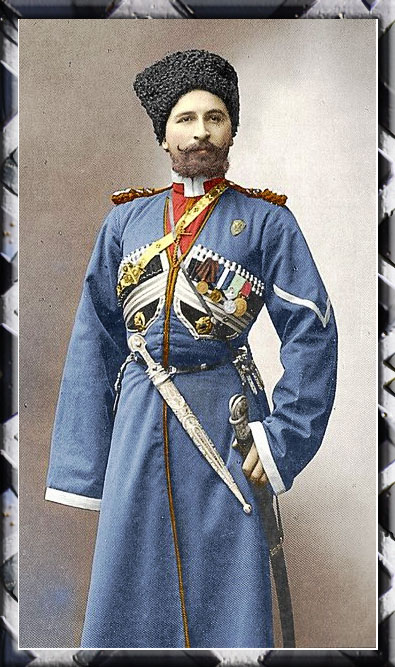
A period colourised photo of the Tsar's guard. Photos of guards are very common, but colour is quite unusual.
Miscellaneous
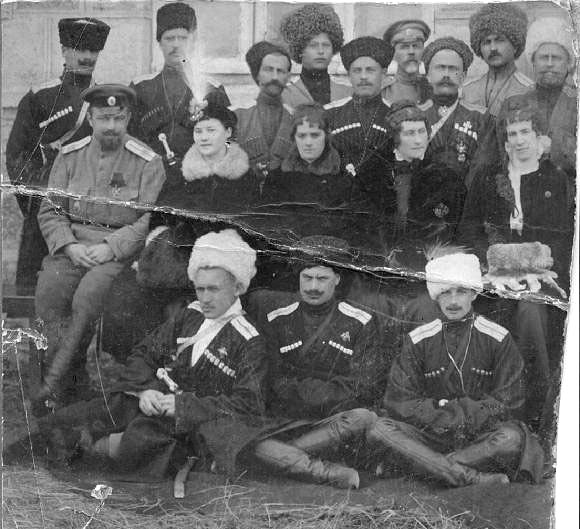
Officers in the AFSR. It was not at all unusual for senior officers to dress in Kuban style during the Civil War, even if they were not Cossacks. Normally when they did so they wore a very dressy version of the outfit.
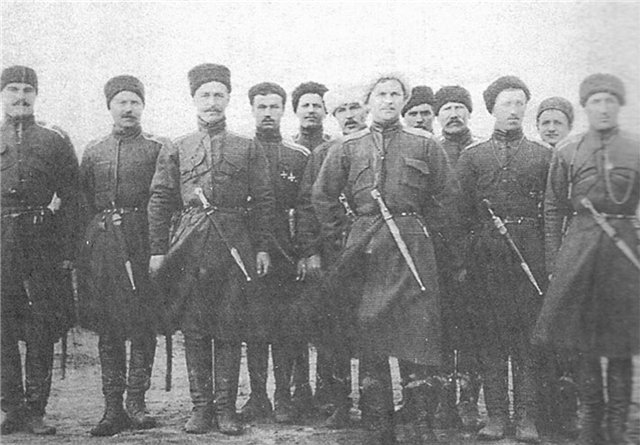
A WWI field variant halfway between cherkeska and military greatcoat (a Becherovka?).
Shkuro's Wolves

Shkuro, with AFSR chevron, and aide.
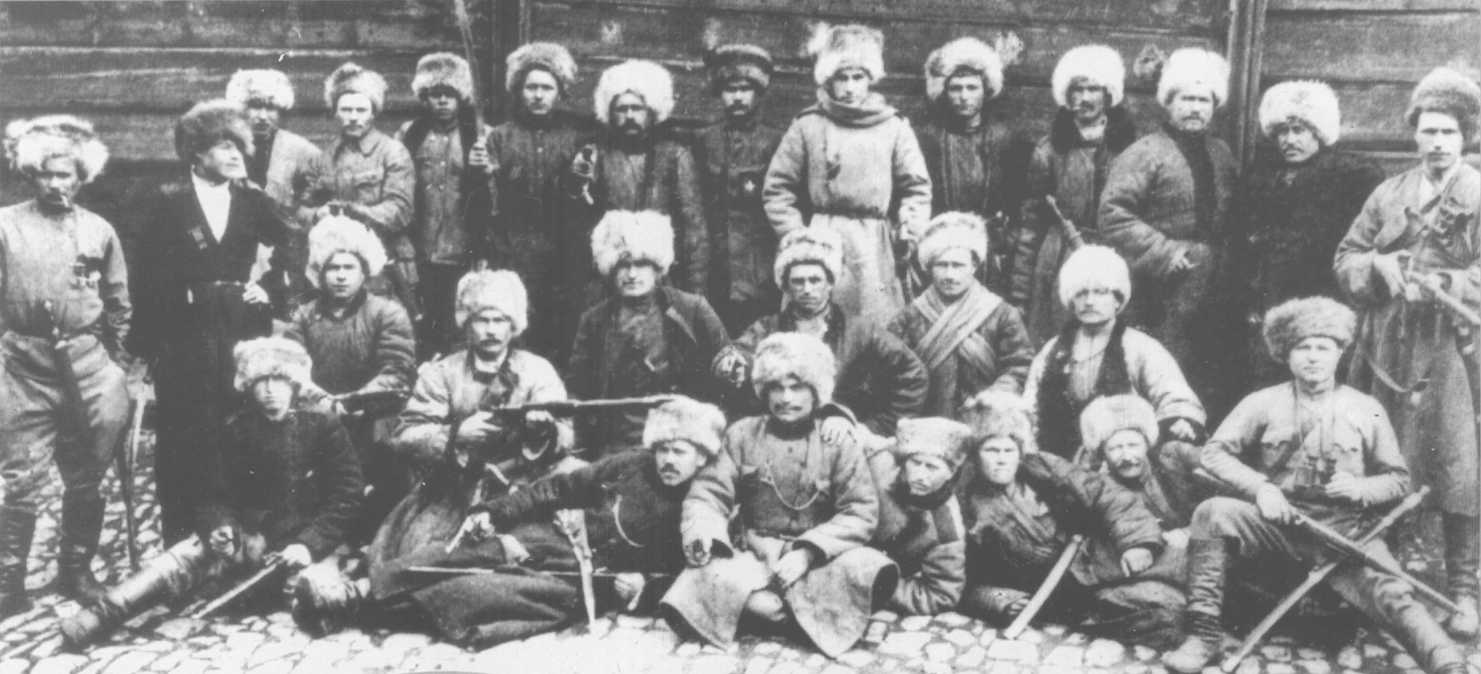
Shkuro's sotnia (shrunken). For once it actually looks like they have wolf-fur papakhas. None have a white stripe however. (Photoalbum)
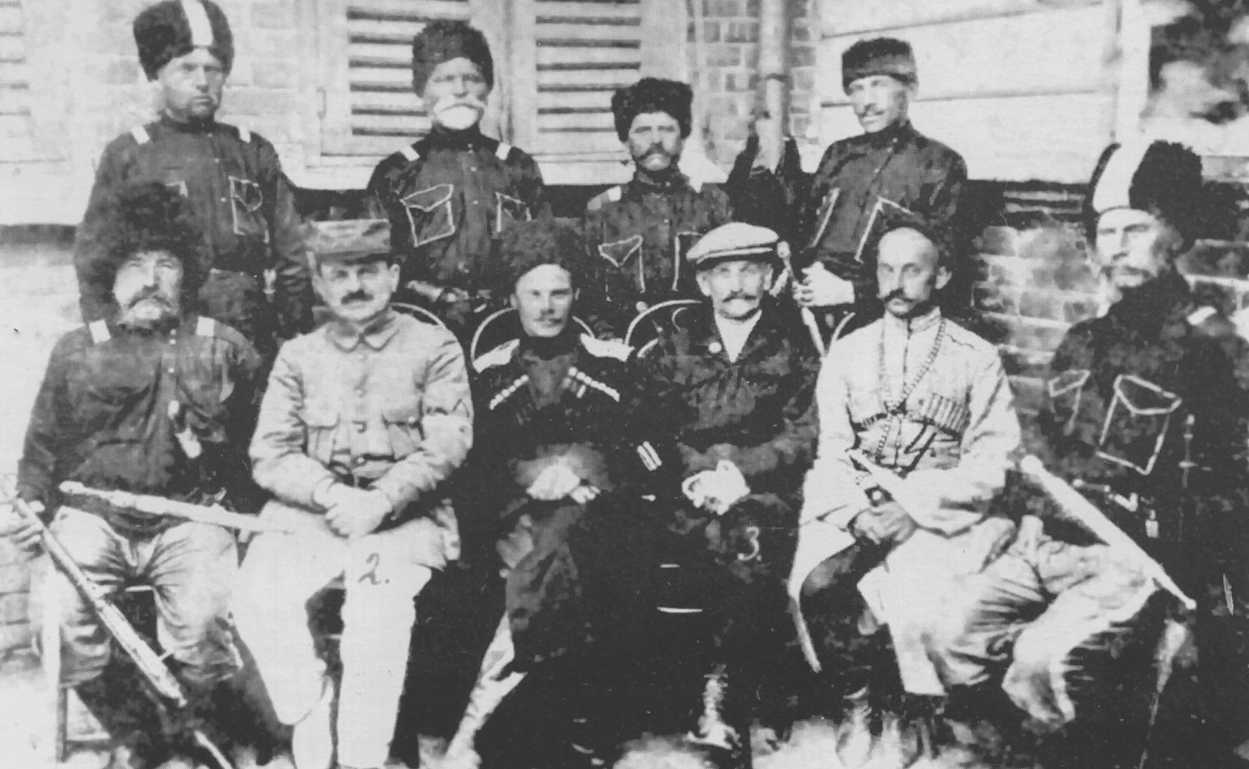
Shkuro with two representatives of the Allies and his personal adjutant, surrounded by his personal escort. Note the hats appear to be black not wolf-skin and only two have the white stripe. These men have piping on their shirt pockets, but this would not be visible in action when the cherkeska was worn.
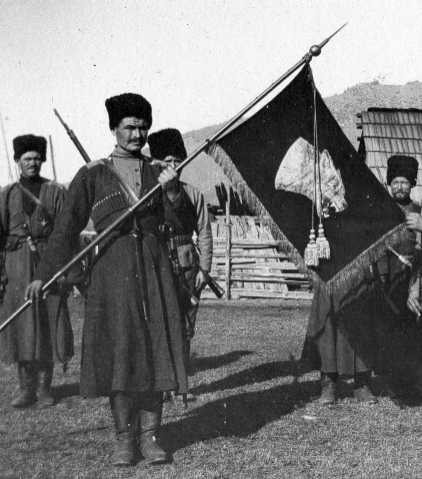
Shkuro's partisans in 1916, showing the flag at that time.